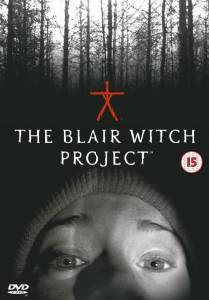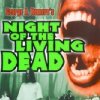Ah, the 1990s… when the Eighties were a distant memory. The Nineties were mad for it. Grungier than its predecessor, we never thought there would someday be a price to pay for all those late nights spent clubbing it. Nowadays the whistles and glowsticks seems just as bad as those silly hats.
Horror movies had a hard time in the 90s. The 1980s had milked the slasher movie to death. Vampires and werewolves were old hat. Even the horror comedy was on its way out. In a way, many of these movies represent the dying breaths of horror’s staple bad guys. The horror genre was about get ugly…
Exorcist III 1990
The decade began with a shuddering return to form of William Peter Blatty’s faith-based possession franchise. The film doesn’t seem to know where it’s going. Maybe it simply had nothing new to say. But with some genuinely chilling moments involving a bone saw, this was a worthy sequel to the classic horror hit, if not a new beginning.
Jacob’s Ladder 1990
As a counterpoint to that kind of “old-school” horror, here we have the first of several psychological horror movies as Tim Robbins does a star turn as a man haunted by visions of demons. In true Nineties style, the story turns out to be a bit “meta”.

The children of the night may be beautiful, but they’re not very scary.
Bram Stoker’s Dracula 1992
Francis Ford Coppola turns Bram Stoker’s classic bloodsucker into a kind of modern fairytale. Not scary in the least, and certainly not a definitive version, despite the claim to closely follow the novel (which it doesn’t), and full of wildly uneven performances, you have to admire its impressive, visual style, while Gary Oldman’s outing as Dracula would cement him as a great actor for years to come.
Army of Darkness 1992
Sam Raimi rounds off his “Evil Dead” trilogy with this rip-roaring slapstick live-action cartoon. Boasting some great comic one-liners and an even more OTT performance by B-movie legend Bruce Campbell, this Halloween treat contains skeleton warriors, flying books, and an extremely surreal scene in a windmill where Ash chases around little versions of himself. This is one of those films that’s so bizarre it stands in a category of its own. It is also so downright mad that it ended the series, albeit on a high note of laughter.
Interview with the Vampire 1994
Neil Jordan brought audiences the visually alluring but story-lite “Company of Wolves” in the 80s. Here, he tackles Anne Rice’s novel of a vampire telling the story of his 200 year-old existence. Starring Tom Cruise in role nobody expected of this all-American action star (a bloodsucking ghoul), and a young Brad Pitt, as well as a 12 year-old Kirsen Dunst, this is a lavish tale worthy of those old Hammer classics of the Sixties. But the novel has a touch of 1990s despair about it. This vampire doesn’t know his place in the world and is constantly seeking something to believe in – a little like people in the 1990s. Once again, the vampire is a reflection of his times, which perhaps explains why it took so long for the book to reach the screen.
From Dusk Til Dawn 1996
Quentin Tarantino hit the big time in the 1990s with his multiple-storyline post-modern heist flick “Reservoir Dogs”. Here, he dips his wick in the horror genre, at least for the first half. Once the vampires cut loose, he turns directing over to Robert Rodriguez, who brings his over-the-top campy action style into play. Hard to take seriously today, this movie has its tongue surgically implanted in its cheek. It is also the movie that inspired a million tattoos thanks to George Clooney. A fun film at the time that is less fun with age, it had some strong actors but is ultimately a bit of a gimmick rather than a serious movie – the main draw being actors getting killed whom you expect to survive. Horror, it seemed, was running out of ideas.

Are you cool? I’m cool. Are we cool? Vampires are not… cool in this movie.
Scream 1996
The last word in Slasher movies belongs to Wes Craven, who was ironically one of its creators. This film is postmodern in every sense. Teens stalked by a slasher discuss how slasher movies work in order to escape their killer, only to discover that the killer also watches slasher movies and knows as much about them as they do. The death knell of the slasher movie can be heard loud and clear in this horror/thriller. After this, there was simply nowhere for the subgenre to go.
Event Horizon 1997
An underappreciated film that makes little sense on first viewing. Imagine Star Trek crossed with a John Carpenter film and you get the picture. Horror icon Sam Neil (at this time a big draw thanks to Jurassic Park) takes a risk as a doomed character in this story of a space ship that returns from its journey into hyperspace without its crew, like a futuristic Marie Celeste. As scientists try to uncover what happened to the passengers, they learn that something nasty waits on the other side of the dimensional border. A Lovecraftian sci-fi, in a sense, this is one of the few truly original horror movies of the decade.
The Faculty 1998
Movie stars got younger and younger in the 1990s as studios targeted their “real” audience. Here, Robert Rodriguez is on form as he directs a tale of high schoolers taking on an alien invasion with the help of a pot-smoking rebel. This B-movie boasts some standout future stars like Elijah Wood and Josh Hartnettt. It is also much more enjoyable than it deserves to be, given the number of irritating jargon-speaking schoolkids. A very “nineties” updating of old 1950s B-movie tropes. Once again, however, the “alien invasion” horror movie had no real place to go.
The Sixth Sense 1999
This movie marked the debut of M Night Shyamalan, whose career would (for a while) be known for its outrageous plot-twists. The movie also resurrected the career of action star Bruce Willis as a psychiatrist treating a kid who “sees dead people”. Although people disagree as to whether the plot twist at the end was a surprise or obvious, the film packs some genuinely creepy moments, and lots of shocks along the way, as only the boy can see the dead folks, but they can see him. Shyamalan’s tale proved hard to copy, but revived a lot of interest in the flagging horror genre for a new generation of filmgoers.

Like it or loathe it, this movie gave the genre a breath of new life.
The Blair Witch project 1999
As if to underline audiences’ boredom with standard horror fare, the found footage genre re-emerged at the end of the century with the most profitable independent film in movie history, usurping John Carpenter’s “Halloween”. Three people get lost in a wood on videotape. It really is that simple. What follows divided audiences. Some loved it for its clever use of a very (nonexistant) limited budget and the way it raises your hackles by not showing you what is going on. Others hated it for precisely the same reason. The found footage genre proved an enormous hit, no doubt because it was very cheap to copy. But whether you love it or hate it, this subgenre gave the horror film a new direction, one that would create a whole new set of filmmakers in the ‘Noughties and beyond, and who would exploit rapidly-changing technology to give the studios a run for their money.
The Nineties suffered from the overdose of slasher movies that took place in the Eighties. For a while the genre was left reeling. But new technology and clever filmmaking resurrected the horror movie at the end of the decade. With audiences demanding new thrills, better special effects, and grimmer storylines to reflect the pessimism of the times, horror movies were about to go to a very dark place indeed.
Next time…
Zombies, zombies, zombies! The world goes mad for George A Romero’s creations. Horror goes viral, ghosts turn Japanese, and it seems that anyone can make a horror film as long as they have a mobile phone.



















